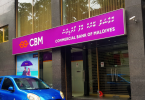A recent bill submitted on behalf of the government to the Parliament underlines a number of drastic changes to tourism land rent laws. Instead of taking one single rent rate across the Maldives, rent taken from various atolls will differ – the further away from Male’ it is, the lower the rental rate will be.
Economic Minister Fayyaz had stated that in order to encourage resort tourism in the Northern and Southern atolls, amendments to land rent for resorts in far regions are being proposed as follows:
- Seenu, Gnaviyani Atolls: USD $2 per sqm (capped at $800k)
- Haa Alif, Haa Dhaalu Atolls: USD $4 per sqm (capped at $1 million)
- Shaviyani, Gaafu Alifu, Gaafu Dhaalu, Thaa, Laamu: USD $6 per sqm (capped at $1.5 million)
Furthermore, to encourage local island tourism, the rent to be charged on built-up areas in the inhabited islands are as follows:
- Seenu, Gnaviyani Atolls: USD $1 per sqm (capped at $400k)
- Haa Alif, Haa Dhaalu Atolls: USD $2 per sqm (capped at $500k)
- Shaviyani, Gaafu Alifu, Gaafu Dhaalu, Thaa, Laamu: USD $3 per sqm (capped at $800k)
- Other atolls: USD $4 per sqm (capped at $1 million)
The proposal, in theory, is a monumental step towards a decentralized economy. Lower rent rates on tourism leases would encourage investment in the North and South of the Maldives, regions which have comparatively been neglected in terms of tourism development.
The bill, however, has garnered criticism by Mohamed Saeed, the Member of Parliament for Maavashu constituency and former Economic Minister. He stated that the proposed changes would reduce revenue from tourism, which is otherwise a very stable and secure source of income for the government.
Mohamed Khussan, Senior Policy Director of the Tourism Ministry, laid to rest Saeed’s argument in a tweet, stating that “reduction in revenue due to reduction in land rent for Northern and Southern regions of the country is a loss that the government is willing to bear short-term to incentivize investment in these regions.” According to him, future revenue increases will be driven by new investments.
On the other hand, there is another aspect to consider when it comes to boosting tourism in such remote regions – easy access to transportation, or lack thereof. As a nation with a naturally dispersed geography, a solid transport system is vital in driving development in more remote islands. The sea transport system in the Maldives needs further improvement to cater to growing demand. At the same time, many are concerned that domestic air travel is not affordable to the average citizen.
As of now, there are 4 international airports in the Maldives – located in Hulhule’, N. Maafaru, Hdh. Hanimaadhoo and S. Gan – along with 13 domestic airports across the country. The government has expressed plans to expand and build more airports as well.
Without the necessary transport infrastructure in place, will the government’s ambitious plan to boost tourism investment in the North and South really live up to its claims? It remains unlikely. However, if more emphasis is placed on improving transportation across the atolls, in conjunction with lower land rental rates, it could very well have a significant positive impact on tourism development in these regions.
Full details are available at the link below:







